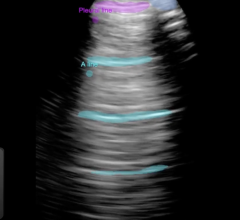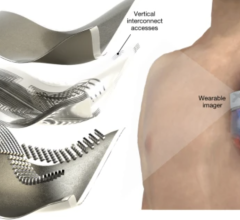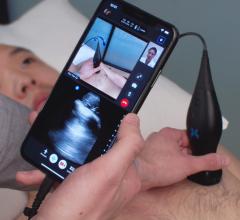November 21, 2011 - Each year, more than 600,000 Americans are stricken with a pulmonary embolism (PE), which is a clot in the lung. Without immediate help, almost half of these individuals may develop pulmonary hypertension, or worse, die. More Americans die each year from a PE than from AIDS, breast cancer and motor vehicle accidents combined. The current method of treatment has been high doses (100 mg) of a clot-dissolving drug administered intravenously over a two-hour period, or the use of anticoagulants. Unfortunately, high doses of clot-dissolving drugs have shown to cause bleeding, the worst of which is a hemorrhage in the brain. Anticoagulants help prevent more clot build up, but do not dissolve the blood clot. If your body does not dissolve the clot fast enough, the right side of the heart becomes enlarged trying to push blood past the clot and heart failure could occur.
A new ultrasound-emitting drug delivery catheter (minimally invasive endovascular treatment) is available that delivers very low doses of clot-dissolving drug directly into the clot. The result is rapid clearance of the clot and reduced risk of bleeding. As ultrasound waves penetrate clot, it causes the clot to become very porous, so that when a clot-dissolving drug is infused, it is rapidly absorbed into the clot. The dissolving process is significantly accelerated. The result is quick clearance of the clot and rapid restoration of blood flow. The phenomena of the effect ultrasound has on clots has been well studied for decades but it wasn’t until recently that ultrasound energy was able to be delivered through the use of a catheter, making the procedure easy and effective. The breakthrough came about with the ability to manufacture micro-miniature ultrasound elements and integrate them into a catheter.
Patients with acute PE can suffer from right ventricular dysfunction. Systemic thrombolysis, used to eliminate the clot burden, has been used to prevent the heart dysfunction but at a cost, as it has a major bleeding complication rate in up to 20 percent of patients.
At VEITH symposium, Tod C. Engelhardt, M.D., chairman of the cardiovascular and thoracic surgery division of East Jefferson General Hospital (Metairie, La.), discussed a better way: catheter-directed, ultrasound-accelerated thrombolysis (USAT). Engelhardt said, “While the clinical benefit of aggressively treating patients who present with right ventricular dysfunction but who are stable has yet to be established, the evidence is remarkable, showing that conservative treatment in these patients results in poor outcome.”
Engelhardt performed a retrospective analysis of intermediate and high-risk PE patients who were treated with USAT, specifically the EkoSonic Endovascular system. The patients had undergone computed tomography (CT) scans at baseline and at varying time points after the procedure. Engelhardt said, “The degree of right heart dysfunction was examined by looking at the ventricular dimension. The technical results were favorable in all 29 PE patients examined.” He reported that the right ventricular dysfunction was significantly reduced after the procedure. In addition, the clot burden was also significantly reduced. All patient were discharged from the hospital and there were no systemic bleeding complications. There were four major access-site bleeding complications with the early cohort of patients when 40 mg of tPA was administered. No bleeding complication were observed when the dosage was reduced to 20 mg. Engelhardt concluded, “This study showed success with USAT in this intermediate-to-high-risk PE patient population, as the procedure rapidly reduced right ventricular dilatation and clot burden. This is a major development.”
For more information: www.VEITHpress.org


 April 03, 2024
April 03, 2024 








